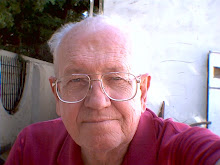Are you obtaining required nutrition from the food you eat?
Summary of findings by Paul Saltman, PhD, UC San Diego
The following was abstracted from a n article written by Paul Saltman, and published in the summer 1995 edition of Engineering and Science, a quarterly publication of the Caltech alumni association.
Dr. Saltman was an expert in biology, chemistry, physics and nutrition. Author of UCSD Nutrition Book. Saltman based his observations about nutrition on the success of intravenous feeding via TPN (total parenteral nutrition). TPN was made practical in 1970 by Dr. K. N. Jeejeebhoy, then a young physician, practicing at a Toronto hospital. Dr. Jeejeebhoy devised a method of enabling fat to be infused directly into the bloodstream of a woman, Judith Taylor, who had her severely infected intestinal tract surgically removed. Dr. Jeejeebhoy knew Ms Taylor would starve to death unless all her nutritional needs could be satisfied via a liquid infusion directly into her bloodstream. Sugars, water, minerals, vitamins could be infused easily. The crucial deficiency was fat. Our basal nutrient requirement, for sedentary people, going about their lives is 1,200 to 1,500 calories per day. People engaged in strenuous activity, Sumo wrestlers, Tour-de-France cyclists, require a much larger caloric intake, 4000 to 10,000. A fact underscored by Saltman is that of our total caloric intake, 30-40 percent must come from fat. Dr. Jeejeebhoy was aware that Swedish scientists had discovered a way of putting lecithin, a variety of fat, a phospholipid, into a stable suspension. This was what saved Judith Taylor. And since that fateful trial on Judith Taylor, Thousands (if not hundreds of thousands) of people have survived solely on the nutrients contained in TPN. This fact was used by Dr. Saltman to establish his guidelines for good nutrition. These guidelines can be listed as follows:
water-eight glasses, or equivalent, per day (some equivalents: tea, coffee, colas, 7 Up, juices, milk, and water contained in solid food).
Calories- 1200 per day minimum. Can be from sugar, starch, or fat. Almost half of the caloric intake must be as fat. Without adequate fat intake, the body starts consuming stored fat. This can lead to health problems. Any low-fat or no-fat diet should only be undertaken under the supervision of a doctor knowledgeable in matters of nutrition. Any attempt to fill the 1200 calorie requirement using only vegetable matter, can lead to some horrible consequences. For instance, to obtain the U.S.RDA of iron from eating broccoli, you would have to eat 8.5 pounds per day. If you avoid red meat, and opt to obtain your iron, copper, and zinc from fish and chicken, you must eat three times as much fish and chicken.
So, fat is essential in your diet. The problem is that fat tastes good. This is why we have a tendency to overdo intake of fat. Carbohydrates (i.e. sugar, starch) can be metabolized into fat, so attempts to lose body fat by substituting carbohydrates for fat to maintain a minimum caloric intake, are doomed to failure.
